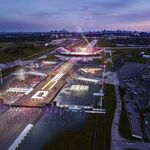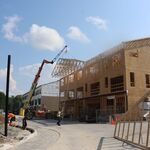Summerhill would make for a nice new transport hub interchange between Via HFR, Line 1, and midtown GO Line(s)
Or Dupont/Spadina
God help us, absolutely not!
Grandstanding politicians who want to politicize the process is the last thing this project needs. But with the lack of transparency of this project so far, VIA Rail has only themselves to blame.
VIA can’t build anything without funding and mandate and this hasn’t been a VIA Rail project since the federal government has founded “VIA HFR-TGF” some five years ago as (admittedly confusingly) subsidiary of VIA Rail, but which has all its masters sitting in Ottawa (TC, Treasury) and Toronto (CIB), not in Montreal.
I feel like cutting Union Station and Gare Centrale would kill the viability of this project, but what do I know lol.
There absolutely is no question about that the HFR downtown terminus should be at Union Station and Gare Centrale, i.e., where the respective citys’ transit systems have their biggest hubs and where the by far most significant agglomeration of office jobs can be found.
I don’t have the time to run the gravity model, but let’s recall why the Ottawa Bypass is such a bad idea: The ridership potential around Ottawa is OM>TO>TM, which means that building the Ottawa Bypass only benefits the smallest of the three markets and is too small to actually justify its own trains. Running separate TM trains weakens the TO and OM markets and leads to less frequencies for all than if operating TOM trunk trains.
Now look at Montreal, where OM>TM>MQ>OQ>TQ: For the two largest markets, nothing on the Quebec-Montreal segment matters, for the third-largest market, only the “downtown station” in Montreal matters and for the remaining “through-markets”, only the transfer point matters. At the same time, the ridership on TOM is a lot higher than on MQ, which makes running through-trains commercially unviable, especially if that implies skipping Gare Centrale.
The obvious solition for Montreal is to run full-length trains on the TOM spine and to have a MQ train connect at Dorval Airport, while MQ passengers board the MQ train at either Dorval, De la Concorde or a transfer point inbetween. There absolutely isn’t any need to contemplate forcing MT passengers out of Gare Centrale and you can bet that all three consortiums have enough commercial expertise to dismiss the Ottawa Bypass or Montreal downtown-outside-of-downtown ideas as extremely harmful and counterproductive…






